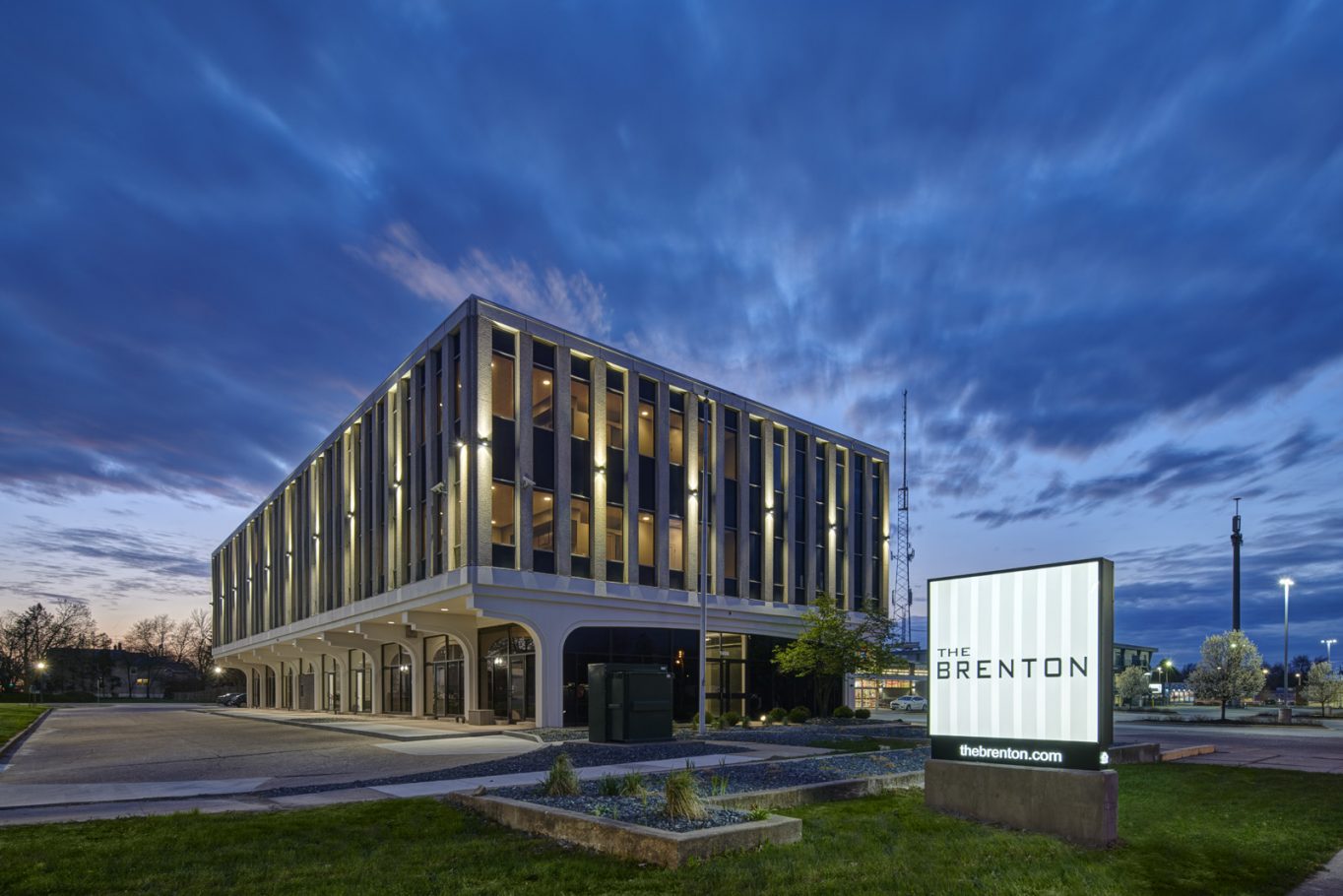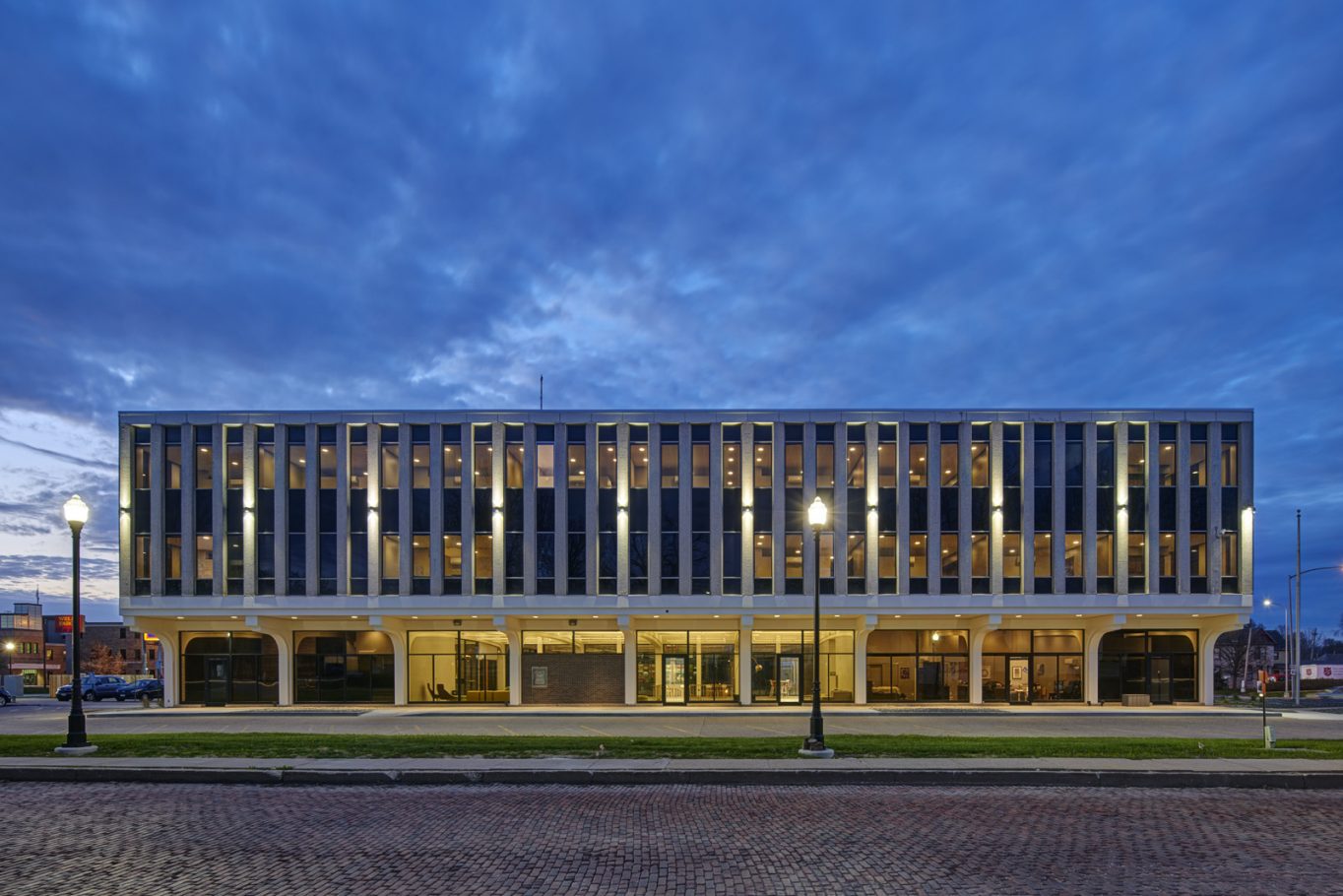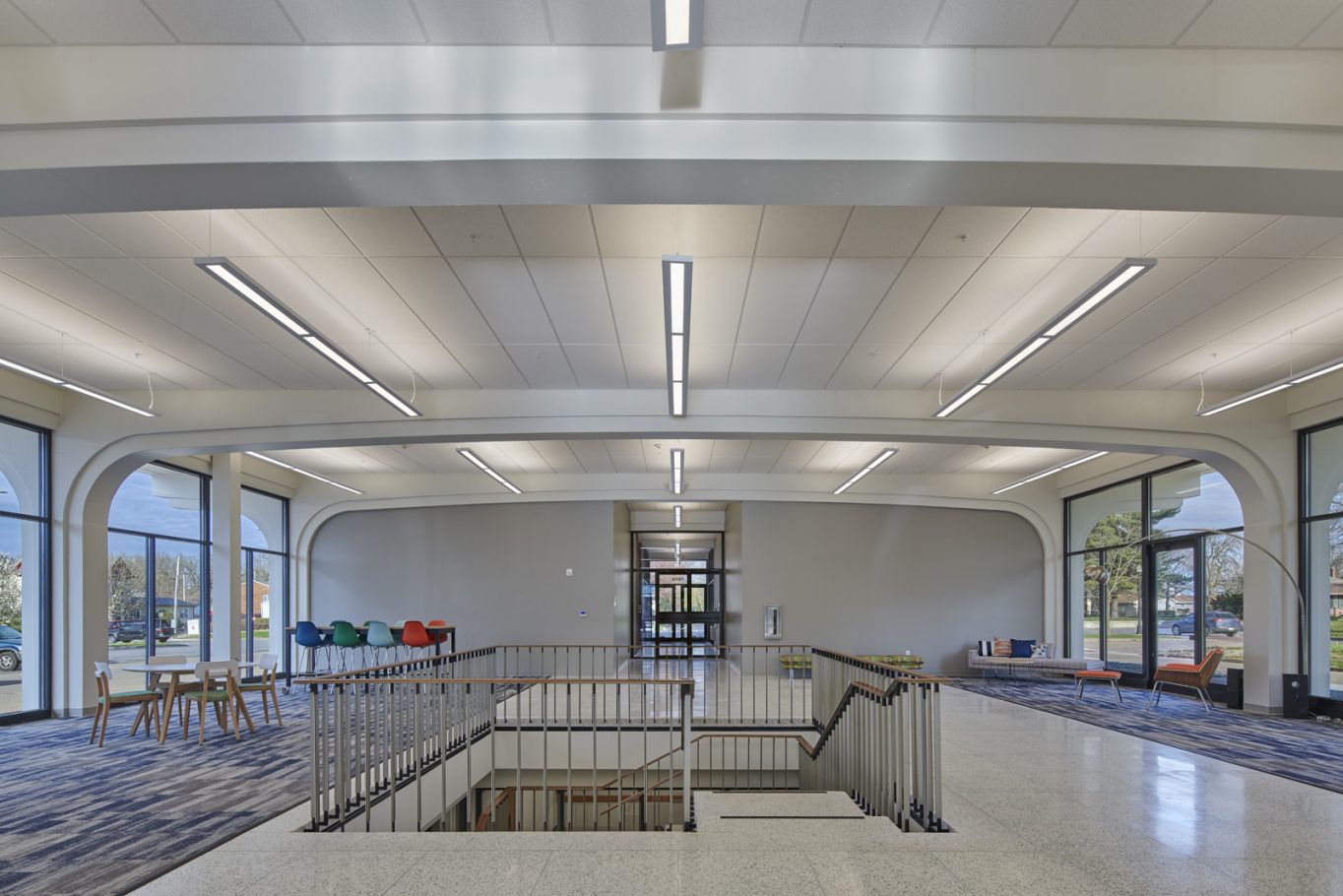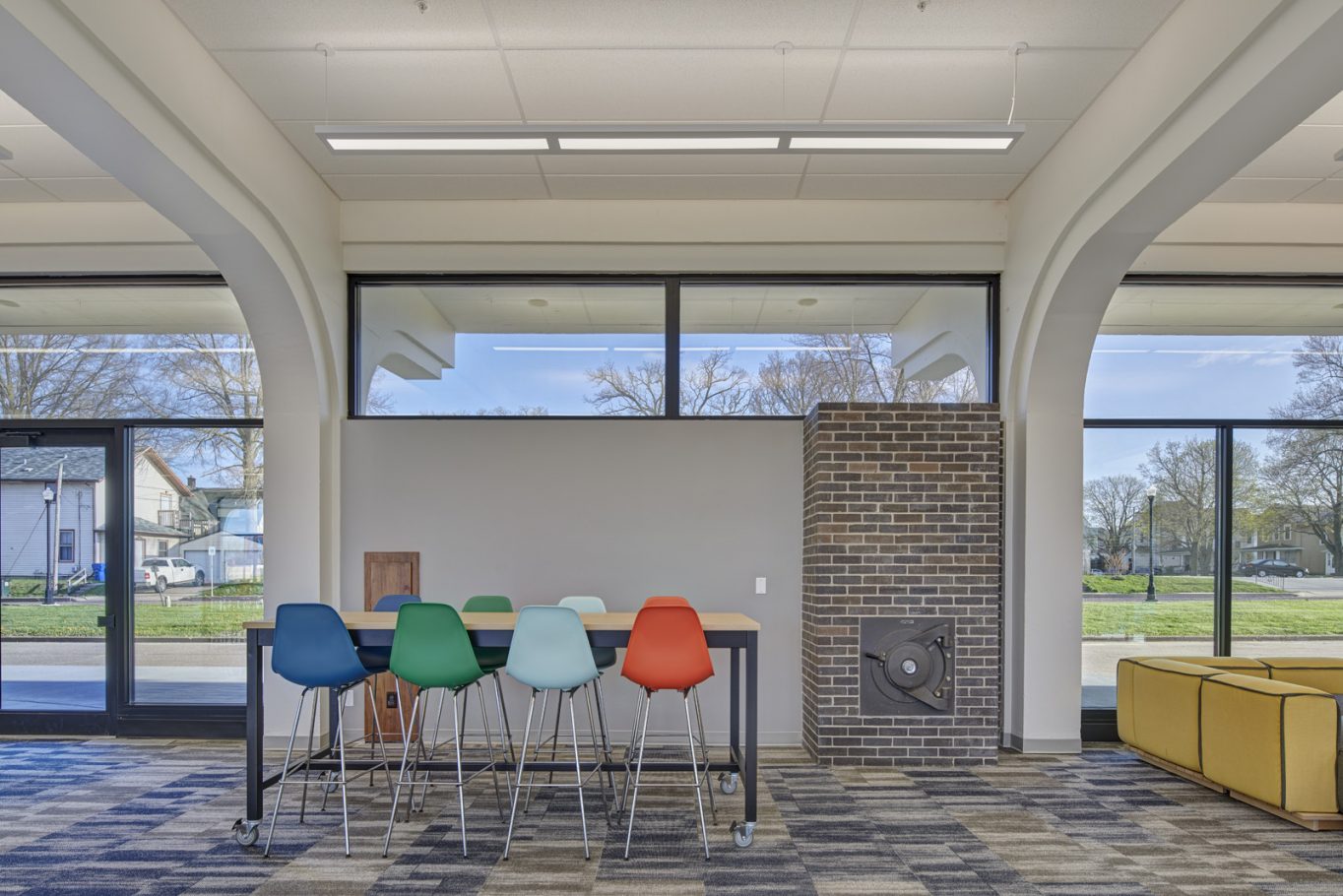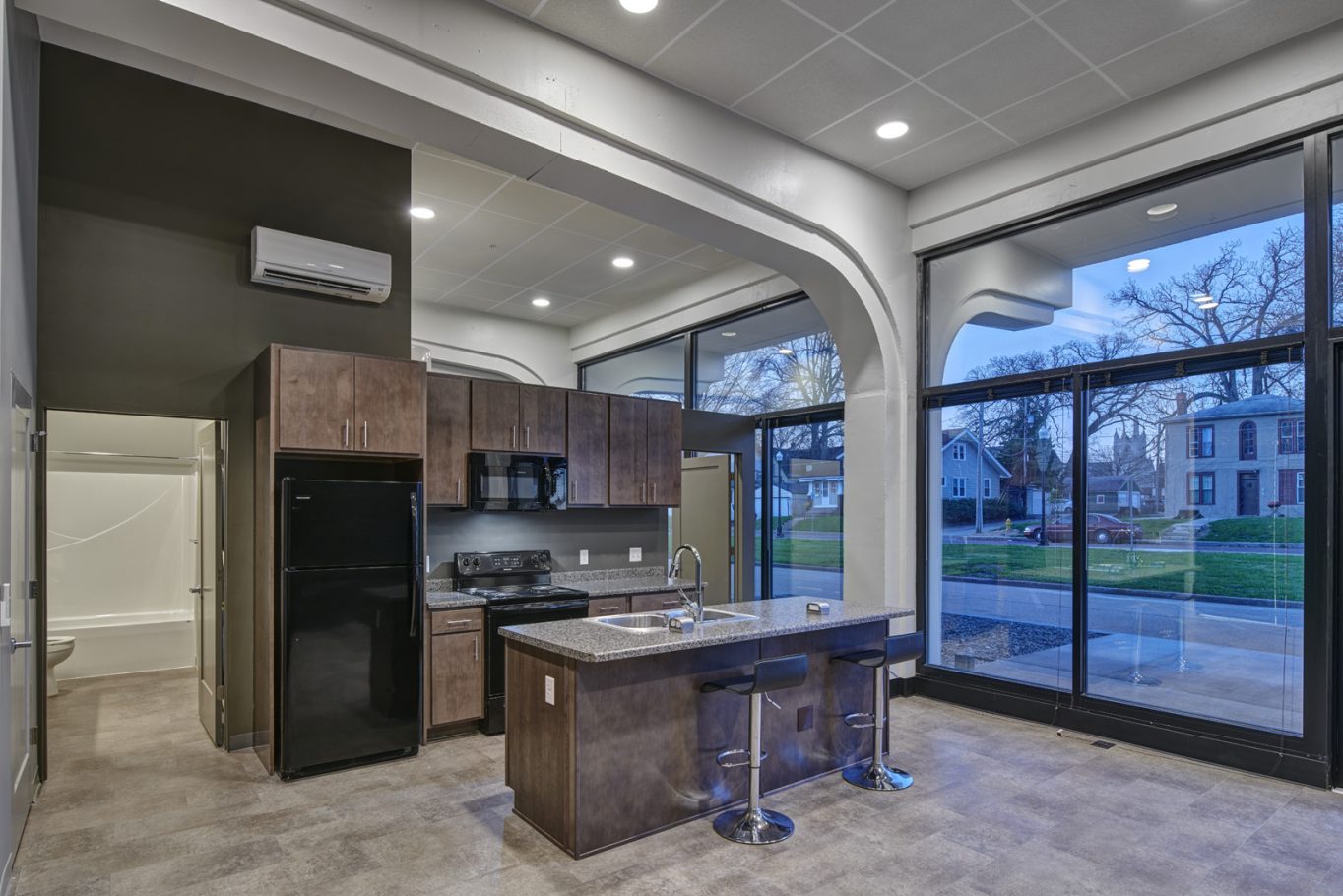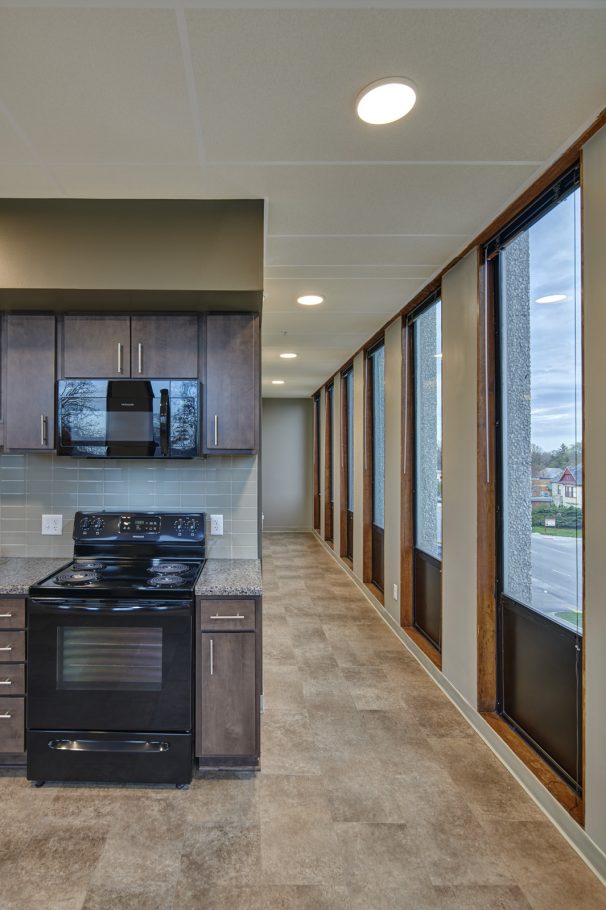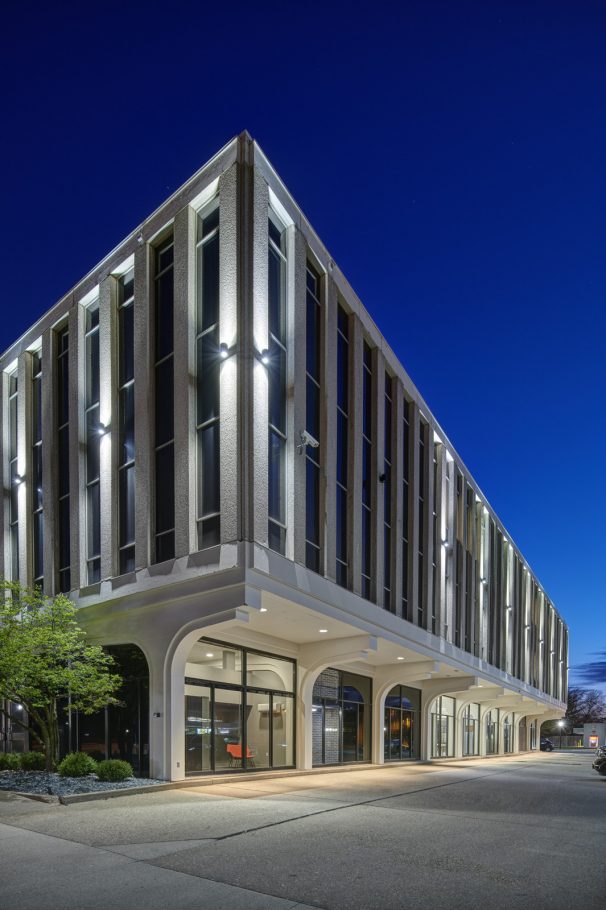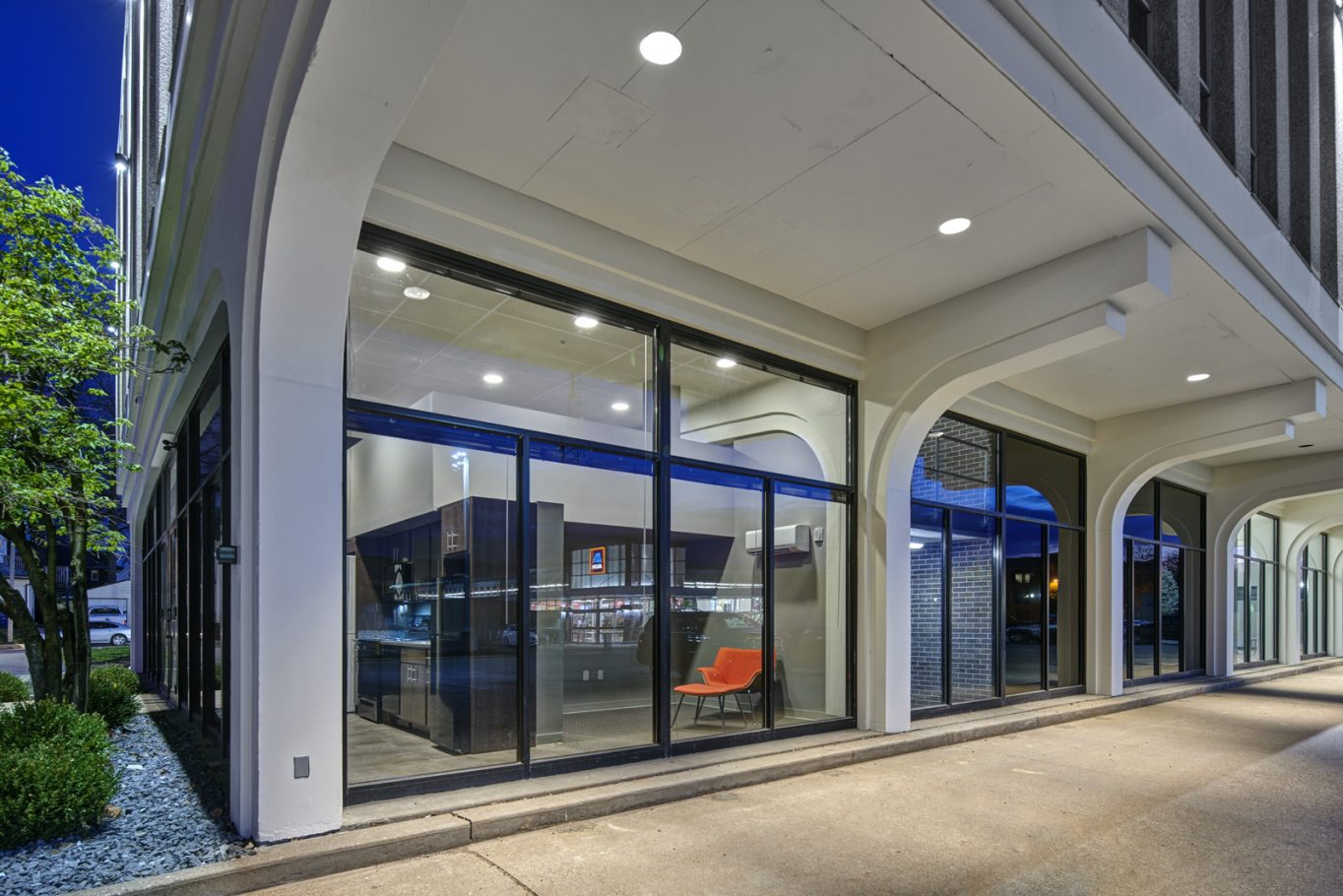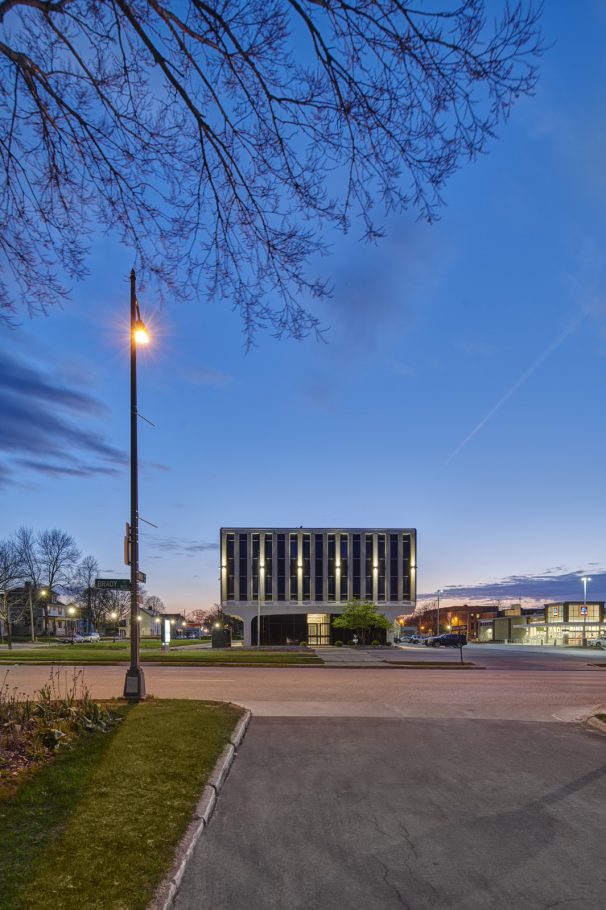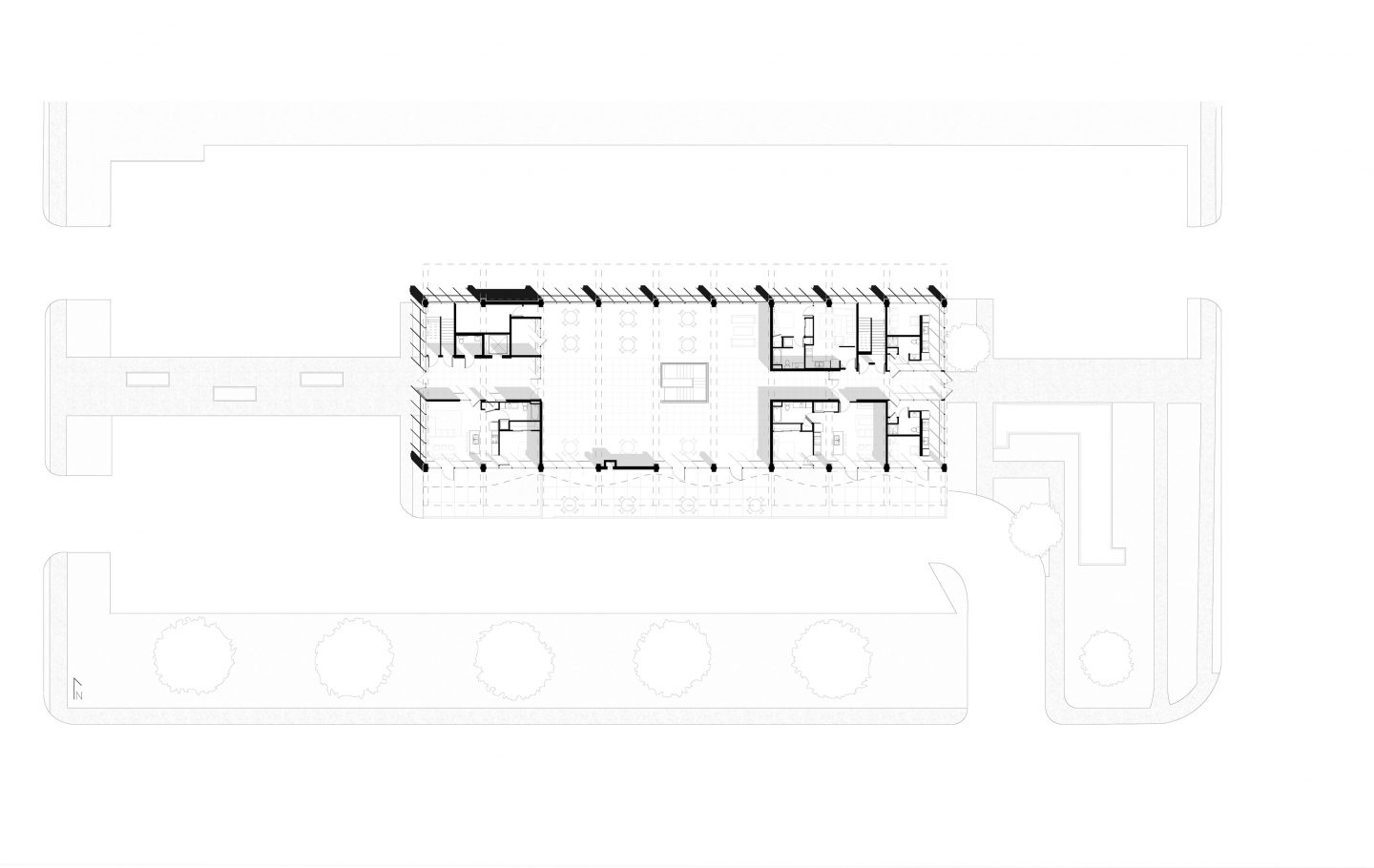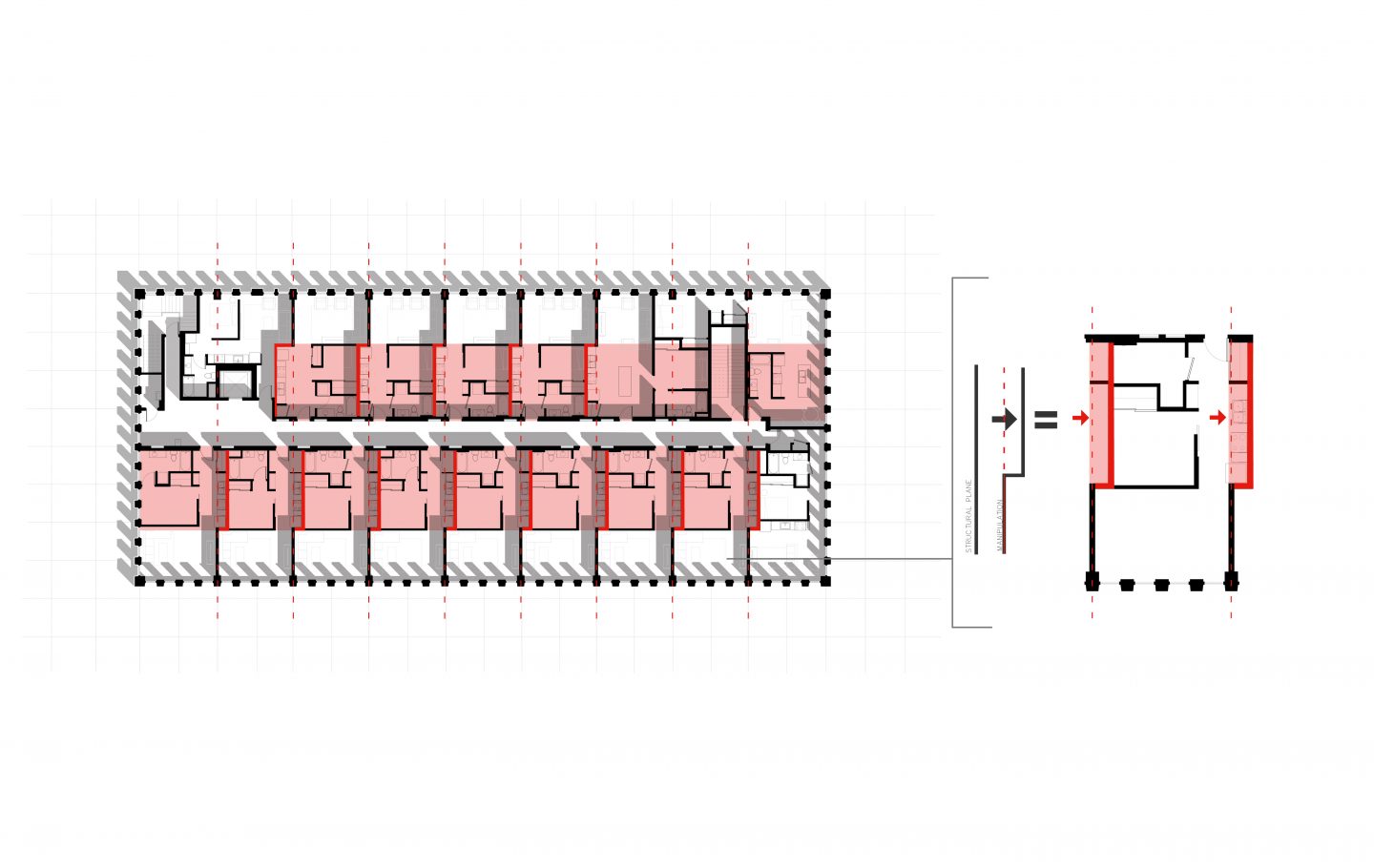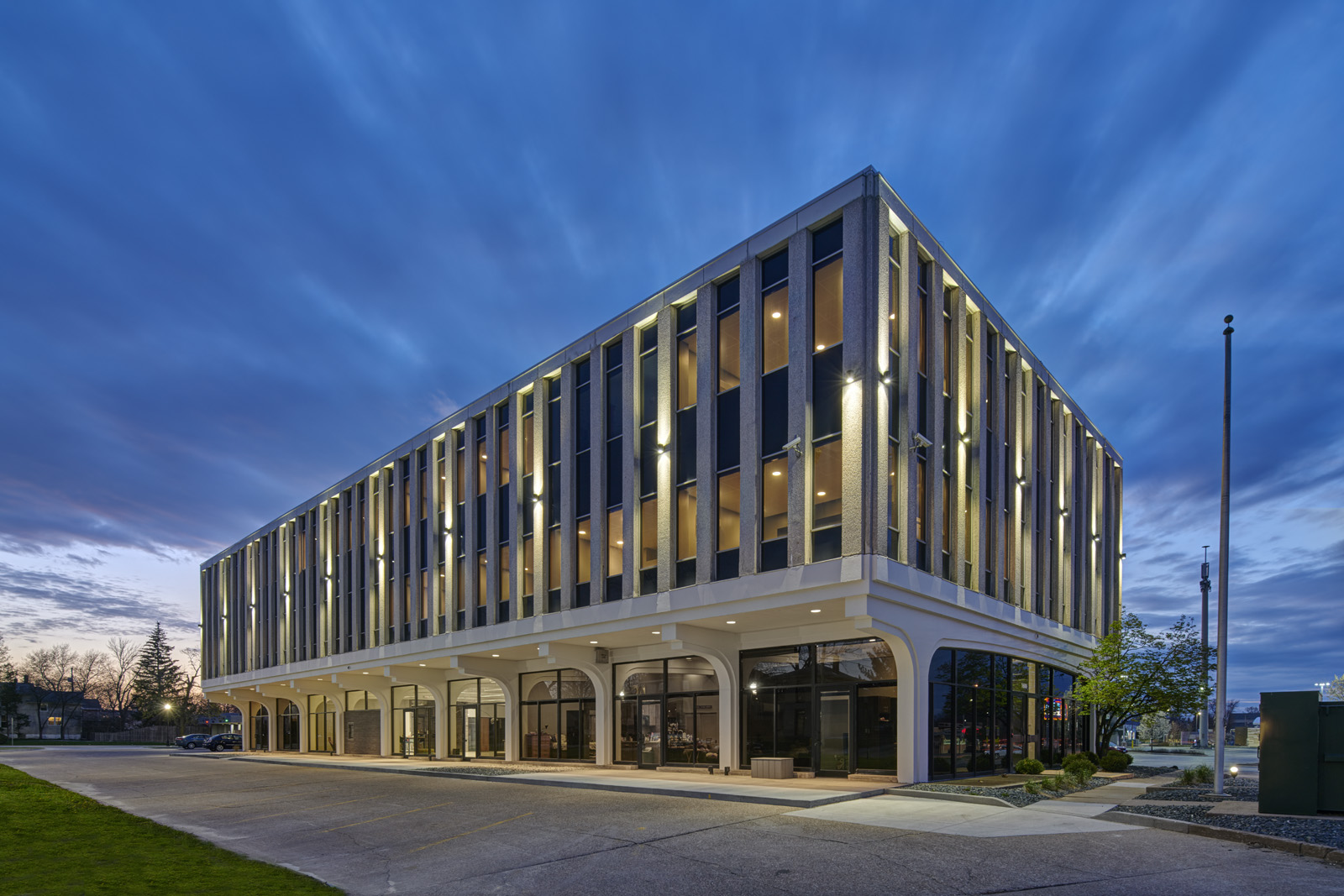
The building was originally designed as a bank. The Brenton Banks were a family owned chain of successful financial institutions known for embracing the formalism and narrative of modern architecture. The Brenton, as the building is now aptly named, is not simply modern. It is New Formalism, a style which emerged in the 1960s as a rejection to the rigid form of Modernism. The style represents one of many 20th century efforts to wed the building forms of the past with new forms enabled by new material technologies. New Formalist buildings embraced many Classical precedents such as building proportion and scale, classical columns, highly stylized entablatures, and colonnades. Here the style was representative of banking and business much like Neo Classism was the language of commerce for centuries before.
The introduction of a residential program into a classically gridded temple of commerce had elements that inserted easily, but the introduction of foreign systems like increasing the number of plumbing fixtures ten-fold required careful consideration, especially at the Teller Lobby. The lobby is a space critical to understanding the buildings hierarchy of space and structural grid. The office areas at each end of the buildings were refitted to living units, including micro units in the small office spaces. A respect to the grid, spaces and volumes was paramount.
The grid of the building was also critically respected on floors two and three. The original office bays easily adapted to one-bedroom units and the rhythm of the corridor doors and sidelights appear as they have for the previous five decades. The demising walls were rebuilt to achieve sound separation and a uniform notch developed in the plan to resolve conflicts of structure and plumbing.
The living spaces created are unique due to the fenestration composition of formerly commercial spaces. First floor units have floor to ceiling storefront while the units on the upper floors have a repeating rhythm of narrow openings which allow for an equally unique living environment. The color palate of recently introduced wall elements is subdued to allow the original elements of structure, terrazzo, aluminum framing and wood doors remain the material focus in the minimalist composition.
The building now contains 38 residences. It remains New Formalism.
Location: Davenport, Iowa
Program: Housing
Area: 39,036 Sq Ft
Client: Newbury Living
Photo Credits: Cameron Campbell Integrated Studio

